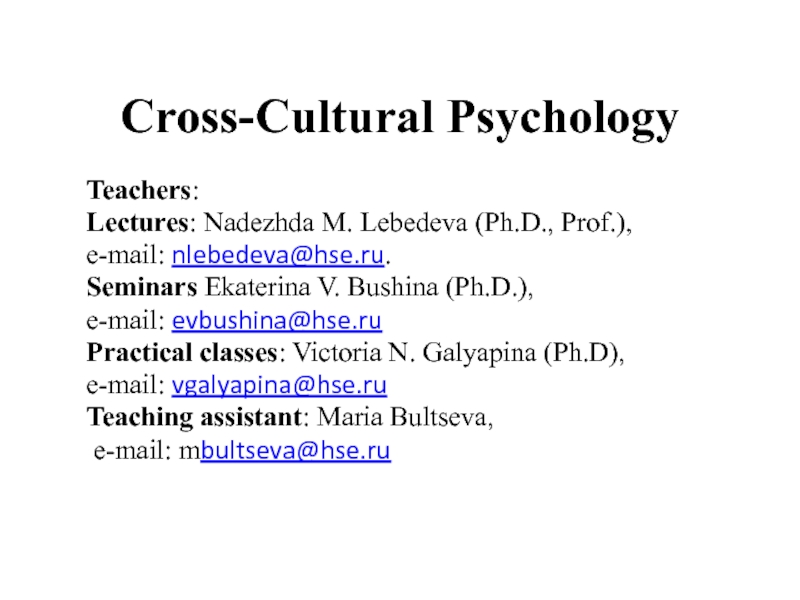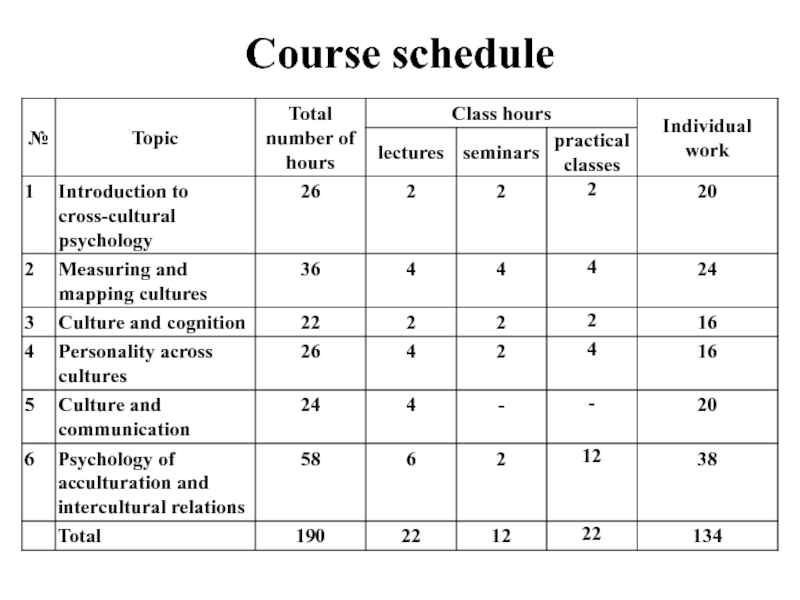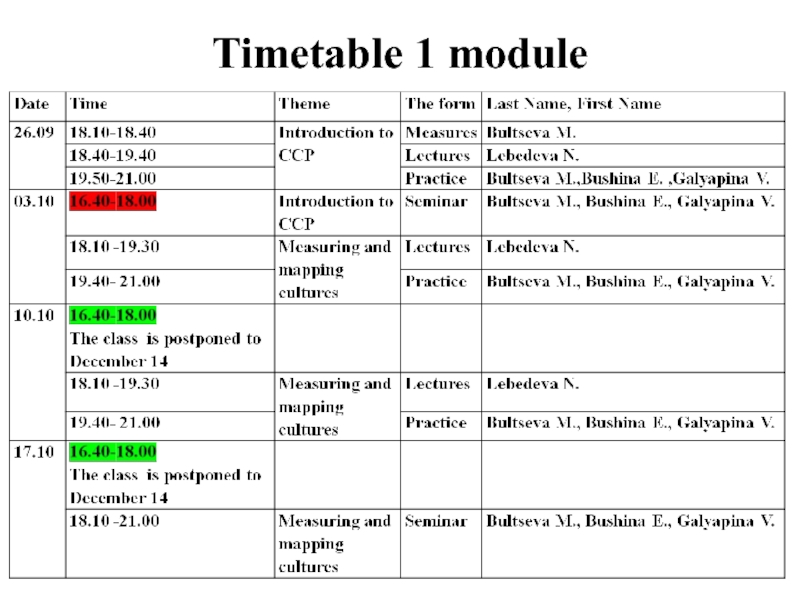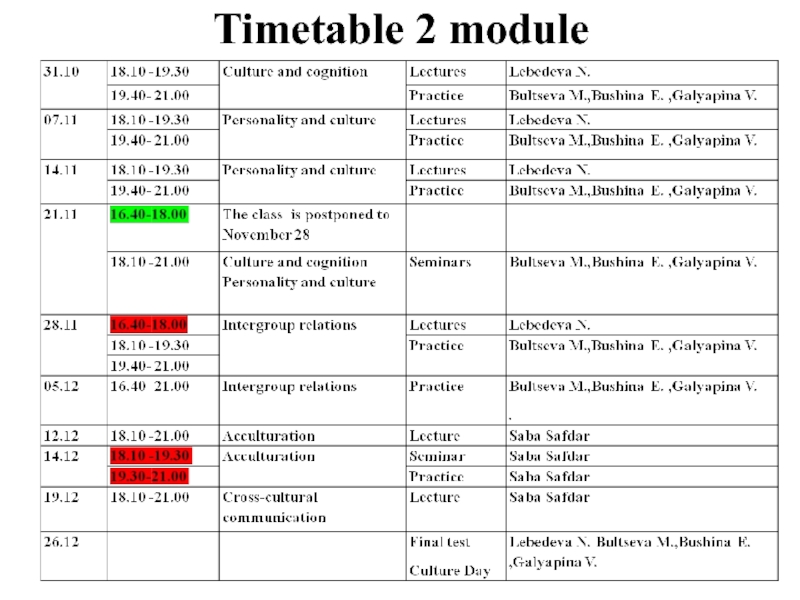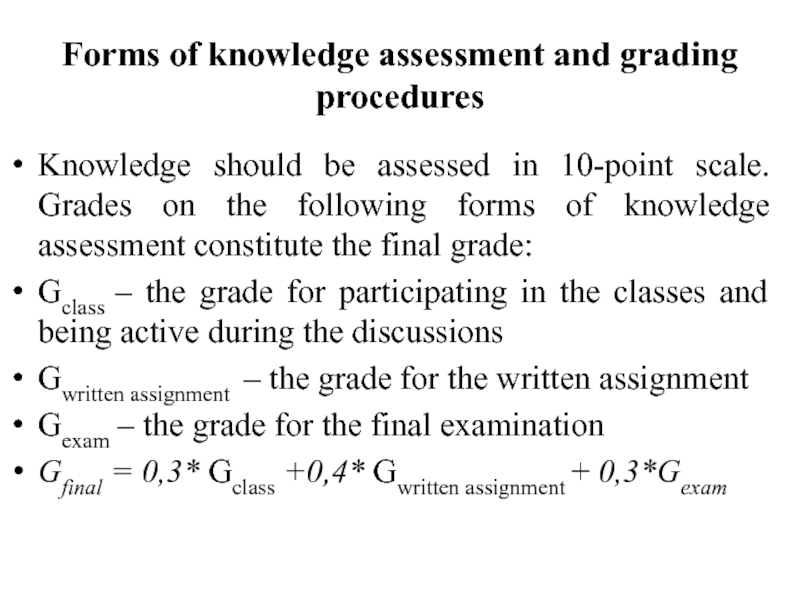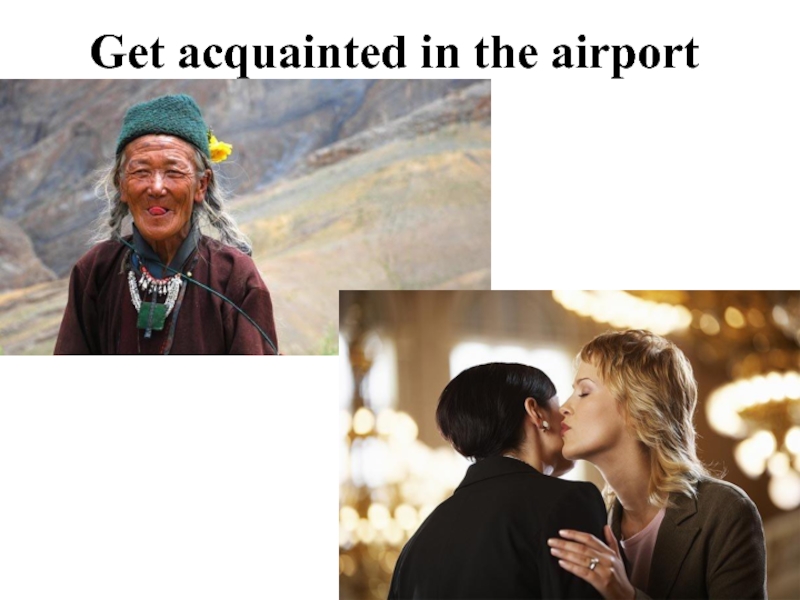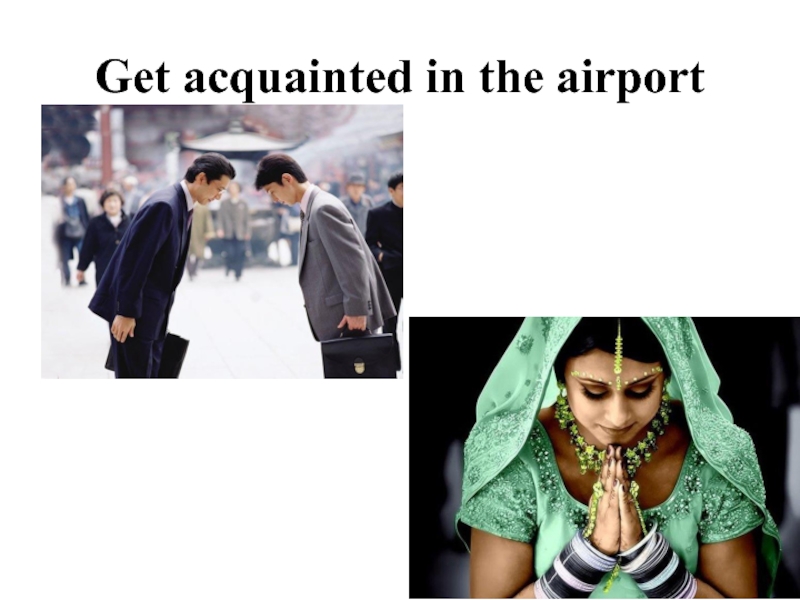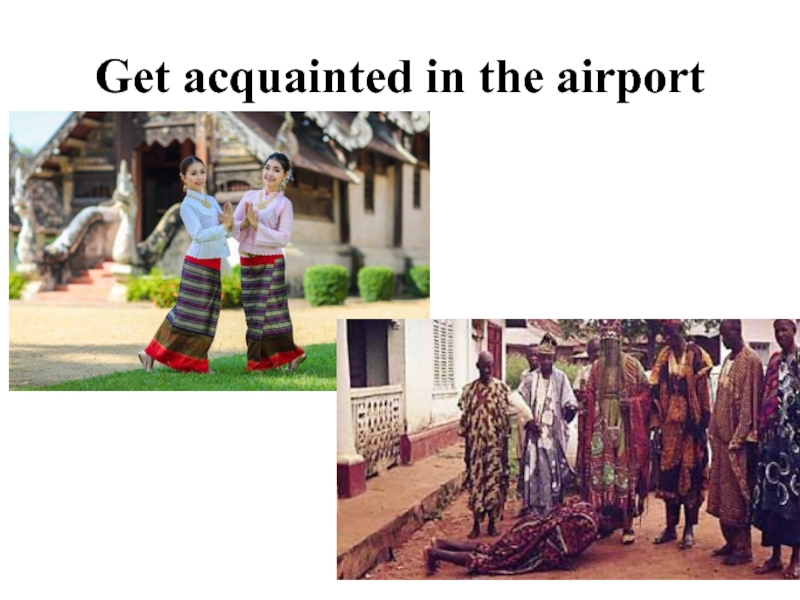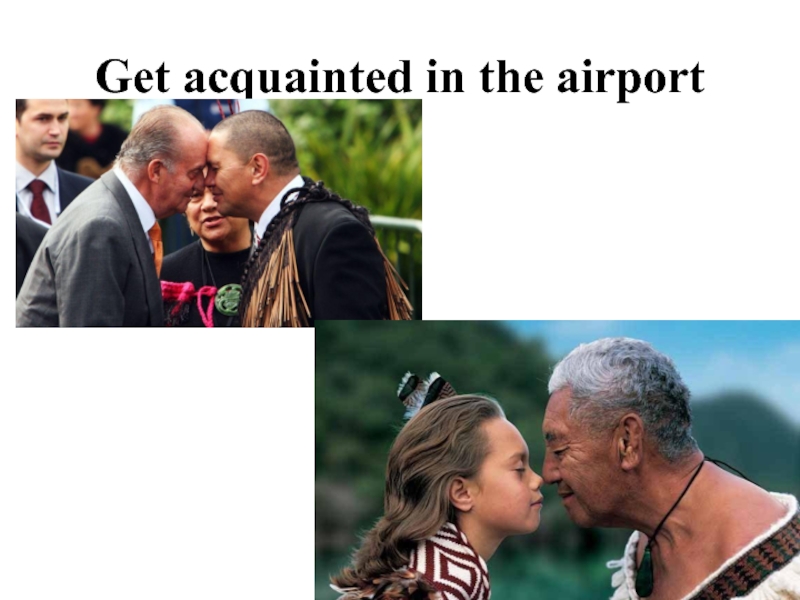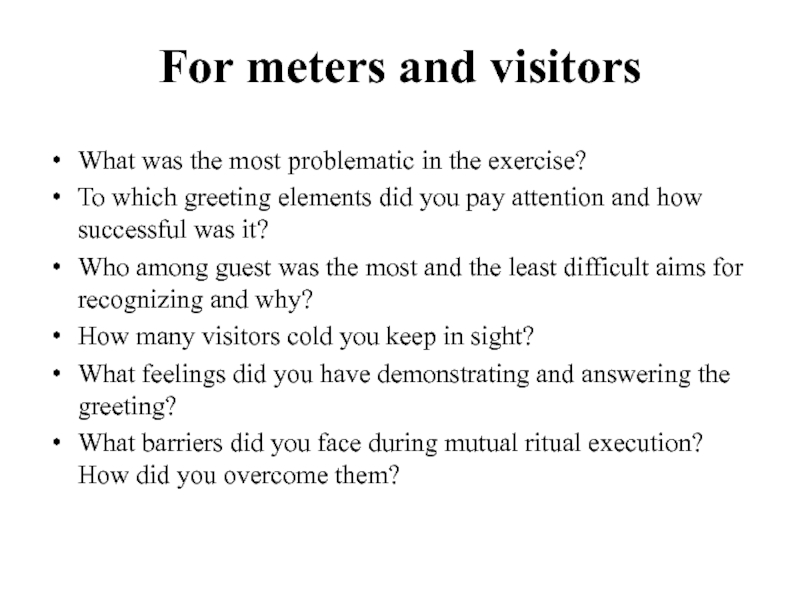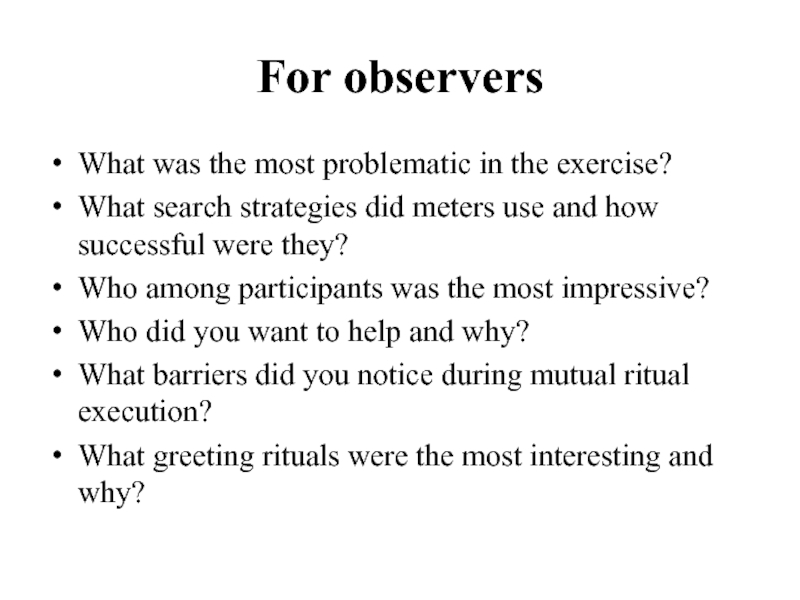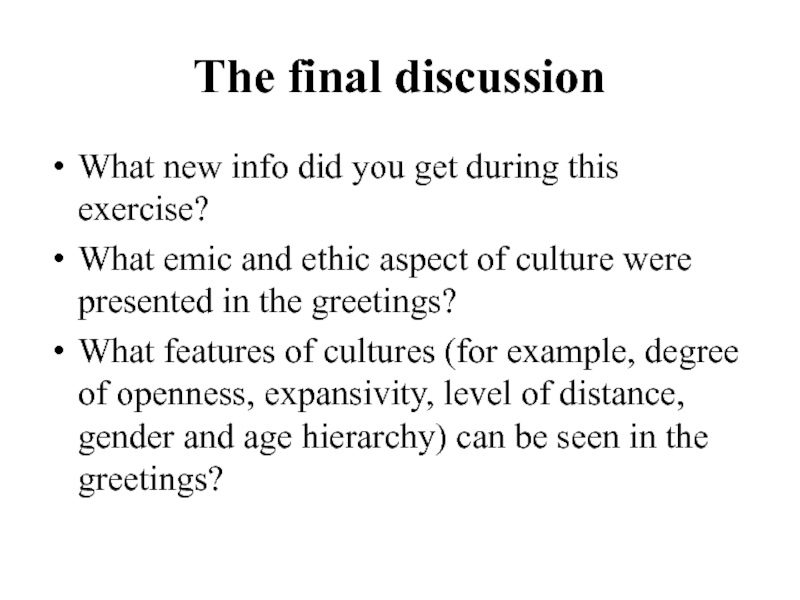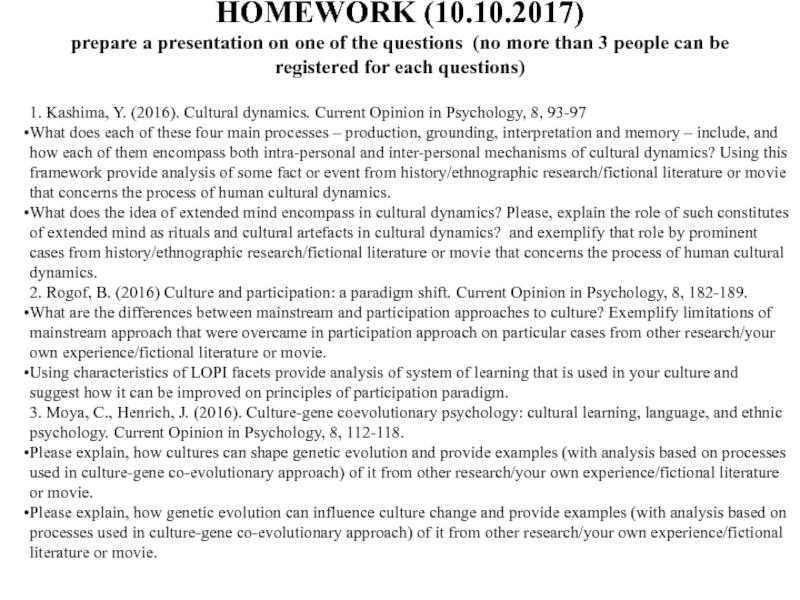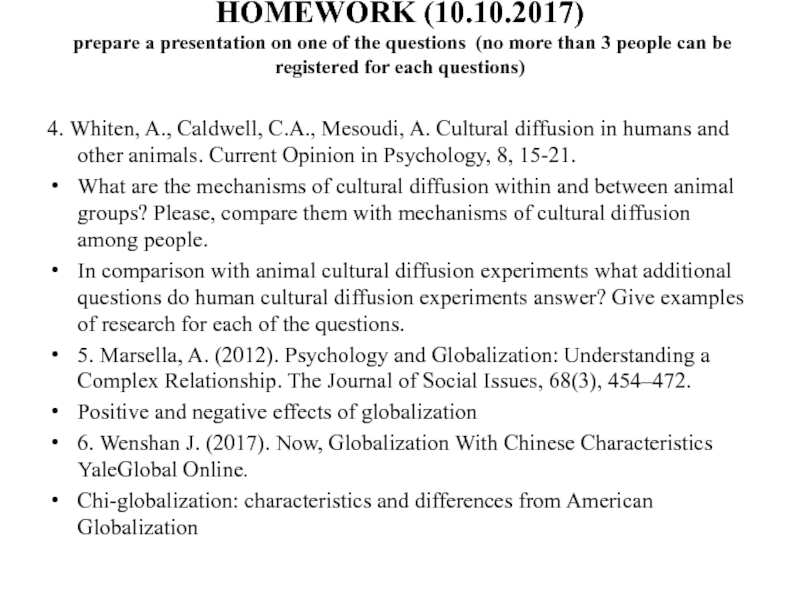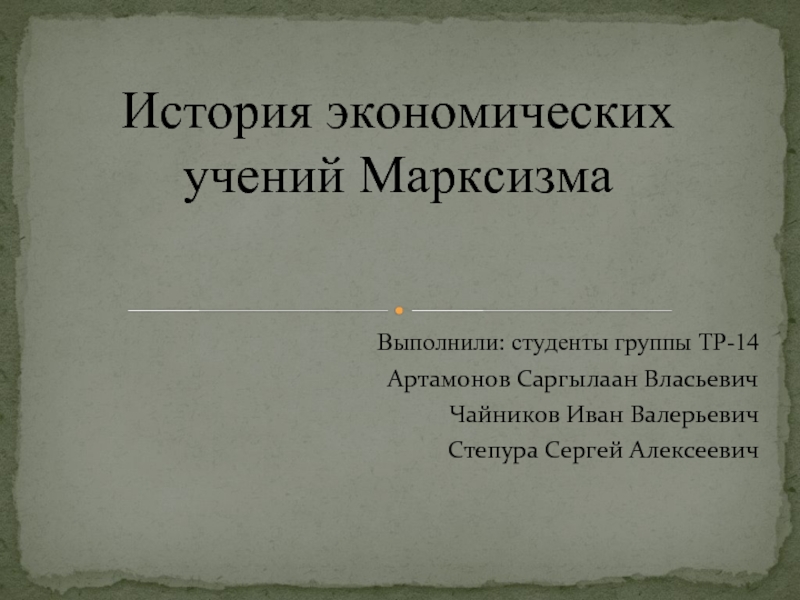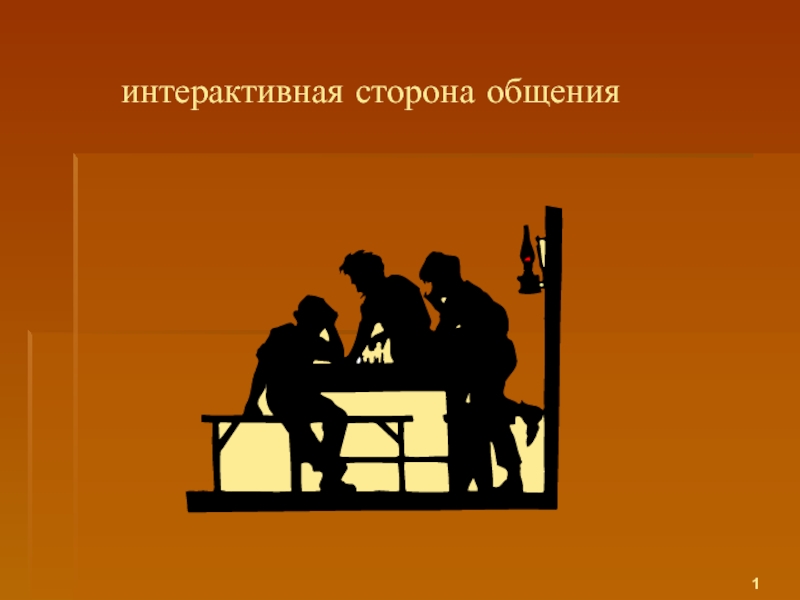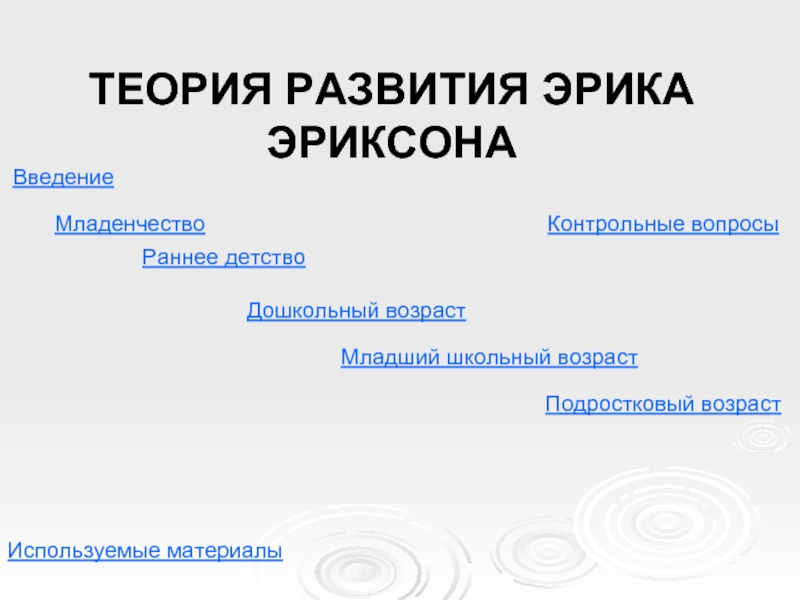- Главная
- Разное
- Дизайн
- Бизнес и предпринимательство
- Аналитика
- Образование
- Развлечения
- Красота и здоровье
- Финансы
- Государство
- Путешествия
- Спорт
- Недвижимость
- Армия
- Графика
- Культурология
- Еда и кулинария
- Лингвистика
- Английский язык
- Астрономия
- Алгебра
- Биология
- География
- Детские презентации
- Информатика
- История
- Литература
- Маркетинг
- Математика
- Медицина
- Менеджмент
- Музыка
- МХК
- Немецкий язык
- ОБЖ
- Обществознание
- Окружающий мир
- Педагогика
- Русский язык
- Технология
- Физика
- Философия
- Химия
- Шаблоны, картинки для презентаций
- Экология
- Экономика
- Юриспруденция
Cross-Cultural Psychology презентация
Содержание
- 1. Cross-Cultural Psychology
- 2. Course schedule
- 3. Timetable 1 module
- 4. Timetable 2 module
- 5. Forms of knowledge assessment and grading procedures
- 6. Get acquainted in the airport
- 7. Get acquainted in the airport
- 8. Get acquainted in the airport
- 9. Get acquainted in the airport
- 10. For meters and visitors What was the
- 11. For observers What was the most problematic
- 12. The final discussion What new info did
- 13. HOMEWORK (10.10.2017) prepare a presentation on one
- 14. HOMEWORK (10.10.2017) prepare a presentation
Слайд 1Cross-Cultural Psychology
Teachers:
Lectures: Nadezhda M. Lebedeva (Ph.D., Prof.),
e-mail: nlebedeva@hse.ru.
Seminars Ekaterina
e-mail: evbushina@hse.ru
Practical classes: Victoria N. Galyapina (Ph.D),
e-mail: vgalyapina@hse.ru
Teaching assistant: Maria Bultseva,
e-mail: mbultseva@hse.ru
Слайд 5Forms of knowledge assessment and grading procedures
Knowledge should be assessed in
Gclass – the grade for participating in the classes and being active during the discussions
Gwritten assignment – the grade for the written assignment
Gexam – the grade for the final examination
Gfinal = 0,3* Gclass +0,4* Gwritten assignment + 0,3*Gexam
Слайд 10For meters and visitors
What was the most problematic in the exercise?
To
Who among guest was the most and the least difficult aims for recognizing and why?
How many visitors cold you keep in sight?
What feelings did you have demonstrating and answering the greeting?
What barriers did you face during mutual ritual execution? How did you overcome them?
Слайд 11For observers
What was the most problematic in the exercise?
What search strategies
Who among participants was the most impressive?
Who did you want to help and why?
What barriers did you notice during mutual ritual execution?
What greeting rituals were the most interesting and why?
Слайд 12The final discussion
What new info did you get during this exercise?
What
What features of cultures (for example, degree of openness, expansivity, level of distance, gender and age hierarchy) can be seen in the greetings?
Слайд 13HOMEWORK (10.10.2017) prepare a presentation on one of the questions (no more
1. Kashima, Y. (2016). Cultural dynamics. Current Opinion in Psychology, 8, 93-97
What does each of these four main processes – production, grounding, interpretation and memory – include, and how each of them encompass both intra-personal and inter-personal mechanisms of cultural dynamics? Using this framework provide analysis of some fact or event from history/ethnographic research/fictional literature or movie that concerns the process of human cultural dynamics.
What does the idea of extended mind encompass in cultural dynamics? Please, explain the role of such constitutes of extended mind as rituals and cultural artefacts in cultural dynamics? and exemplify that role by prominent cases from history/ethnographic research/fictional literature or movie that concerns the process of human cultural dynamics.
2. Rogof, B. (2016) Culture and participation: a paradigm shift. Current Opinion in Psychology, 8, 182-189.
What are the differences between mainstream and participation approaches to culture? Exemplify limitations of mainstream approach that were overcame in participation approach on particular cases from other research/your own experience/fictional literature or movie.
Using characteristics of LOPI facets provide analysis of system of learning that is used in your culture and suggest how it can be improved on principles of participation paradigm.
3. Moya, C., Henrich, J. (2016). Culture-gene coevolutionary psychology: cultural learning, language, and ethnic psychology. Current Opinion in Psychology, 8, 112-118.
Please explain, how cultures can shape genetic evolution and provide examples (with analysis based on processes used in culture-gene co-evolutionary approach) of it from other research/your own experience/fictional literature or movie.
Please explain, how genetic evolution can influence culture change and provide examples (with analysis based on processes used in culture-gene co-evolutionary approach) of it from other research/your own experience/fictional literature or movie.
Слайд 14HOMEWORK (10.10.2017) prepare a presentation on one of the questions
4. Whiten, A., Caldwell, C.A., Mesoudi, A. Cultural diffusion in humans and other animals. Current Opinion in Psychology, 8, 15-21.
What are the mechanisms of cultural diffusion within and between animal groups? Please, compare them with mechanisms of cultural diffusion among people.
In comparison with animal cultural diffusion experiments what additional questions do human cultural diffusion experiments answer? Give examples of research for each of the questions.
5. Marsella, A. (2012). Psychology and Globalization: Understanding a Complex Relationship. The Journal of Social Issues, 68(3), 454–472.
Positive and negative effects of globalization
6. Wenshan J. (2017). Now, Globalization With Chinese Characteristics
YaleGlobal Online.
Chi-globalization: characteristics and differences from American Globalization
